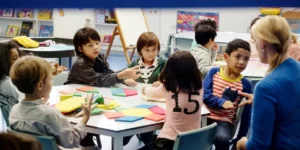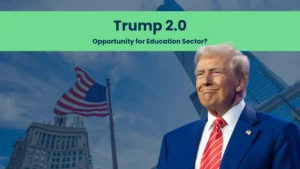We live in an age where information is abundant but clarity is scarce. Ideas and opinions are produced, shared, and consumed at lightning speed, often blurring the lines between fact and assumption, knowledge and noise. According to a report by the World Economic Forum in 2023, a staggering 330 million terabytes of data is generated worldwide on a daily basis, with a significant portion of this data being unfiltered and unverified.
Additionally, Statistics reveals that 64.5% of internet users worldwide say they regularly encounter fake news online. These figures underscore the importance of not merely acquiring information but the ability to challenge existing beliefs and uncover truth. This is where critical thinking comes into play…
Understanding Critical Thinking
Critical Thinking is a cognitive skill that gives us the ability to question, analyze, and interpret information to achieve a deeper understanding and meaningful results. It has become a crucial element in higher education, transforming traditional classrooms into environments of active exploration, where students are motivated to engage, doubt, and discover.
In the field of research, critical thinking serves as a guiding compass for scholars, helping them to evaluate evidence, combat biases, and push the boundaries of knowledge. As per the Gitnux report 2024, teaching critical thinking has resulted in improved academic performance by up to 20% and increased student engagement by 15%.
Navigating the Age of Misinformation
Social media, once celebrated as a platform for connection and free expression, has now become a hub for misinformation, conspiracy theories, and fake news. Rather than providing carefully researched facts, some social media feeds deliberately showcase headlines aimed at inciting controversy, creating division, and capturing fleeting attention. The World Economic Forum’s report highlights misinformation as a prominent global risk for the upcoming decade. Furthermore, a study by MIT Sloan revealed that social media posts containing false information tend to spread six times faster than those with accurate news.
Given these challenges, higher education institutions need to prioritize critical thinking as a core objective rather than treating it as a secondary concern. By prioritizing critical thinking skills, universities can better prepare students not only for professional success but also to navigate a world where truth is subject to debate and clarity is often obscured by noise.
Why Critical Thinking Matters More than Ever in the AI Era?
The significance of critical thinking in education has always been undeniable, but its value is even more pronounced in the age of artificial intelligence. As per the Times Higher Education report, 63% of educators express concern that AI tools like ChatGPT may undermine students’ ability to think independently if not guided properly.
While these AI tools provide learners with instant solutions like essays and research summaries, outsourcing too much thinking to machines could result in a loss of the ability to question, evaluate, and synthesize information on their own. Thus, it is not only important for students to be aware of what they are learning but also how to approach it critically. This involves asking questions such as:
- Is the information accurate, or is there a possibility of bias or incompleteness?
- What are the assumptions underlying this argument?
- Does the evidence provided support the conclusion, or is it merely persuasive language?
- How do various sources differ, and which ones are more reliable?
How can we encourage AI Usage while still assessing student thinking?
- Integrate AI Literacy with Critical Thinking
Educate students on how AI functions, including its strengths, limitations, and potential biases. This knowledge empowers learners to assess the responsible use of AI critically.
- Create Assignments Requiring Human Judgment
Design tasks that demand reflection, personal experiences, or context-specific analysis, areas where human insight is essential, instead of easily automated tasks.
- Implement Socratic Questioning and Debate
Encourage structured questioning and debates to help students explore assumptions, defend arguments, and analyze various perspectives.
- Use AI as a Collaborator, Not a Substitute
Educators should demonstrate how to incorporate AI tools into the learning process as a tool for initiating inquiry rather than relying on it as the sole source of information.
Conclusion
Establishing a culture centered around critical thinking is a continuous process that requires a collective effort within educational settings. Educators should lead by example through self-reflection on their beliefs and choices. Academic institutions should develop curricula centered on inquiry-driven education and assessments that gauge analytical thinking, innovation, and logical reasoning rather than mere memorisation. By cultivating the habit of thinking deeply, questioning wisely, and analyzing thoughtfully, we are not just preparing students for exams, we are strengthening their ability to confront the challenges of an increasingly complex world.
————————————————————————————————————————–
References:





